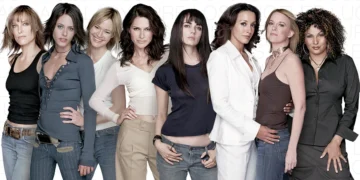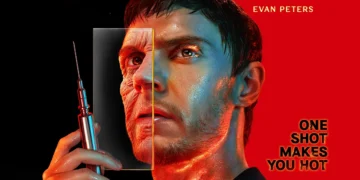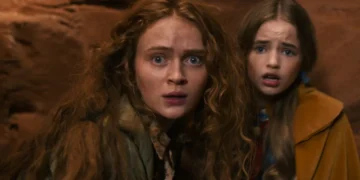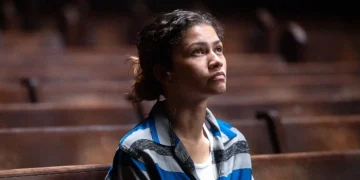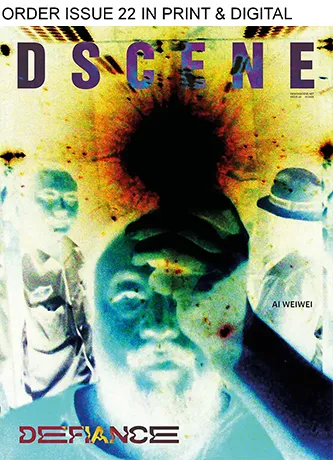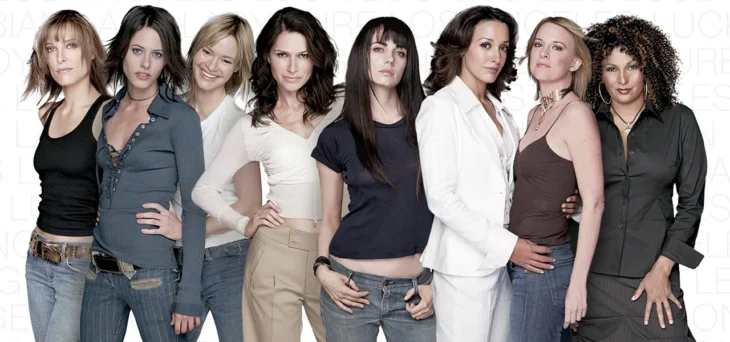
Television has long shaped public perception, and for queer audiences, it has also served as a mirror – sometimes distorted, often incomplete, and occasionally transformative. For decades, LGBTQ+ characters were either invisible or relegated to marginal roles. But over time, a number of shows challenged that silence, offering narratives that centered queer lives with complexity, depth, and emotional honesty. This article looks at the most influential queer television shows, from groundbreaking network comedies to deeply personal dramas. Each of these series changed the way queerness was represented on screen, expanded what was possible in storytelling, and left a lasting mark on both pop culture and the communities they reflected.
Through these shows, we see how queerness moved from subtext to story, from coded to candid, and from isolation to community. Some faced backlash. Some opened new doors. All reshaped the medium – and the lives of viewers who saw themselves in characters once considered too risky to include.
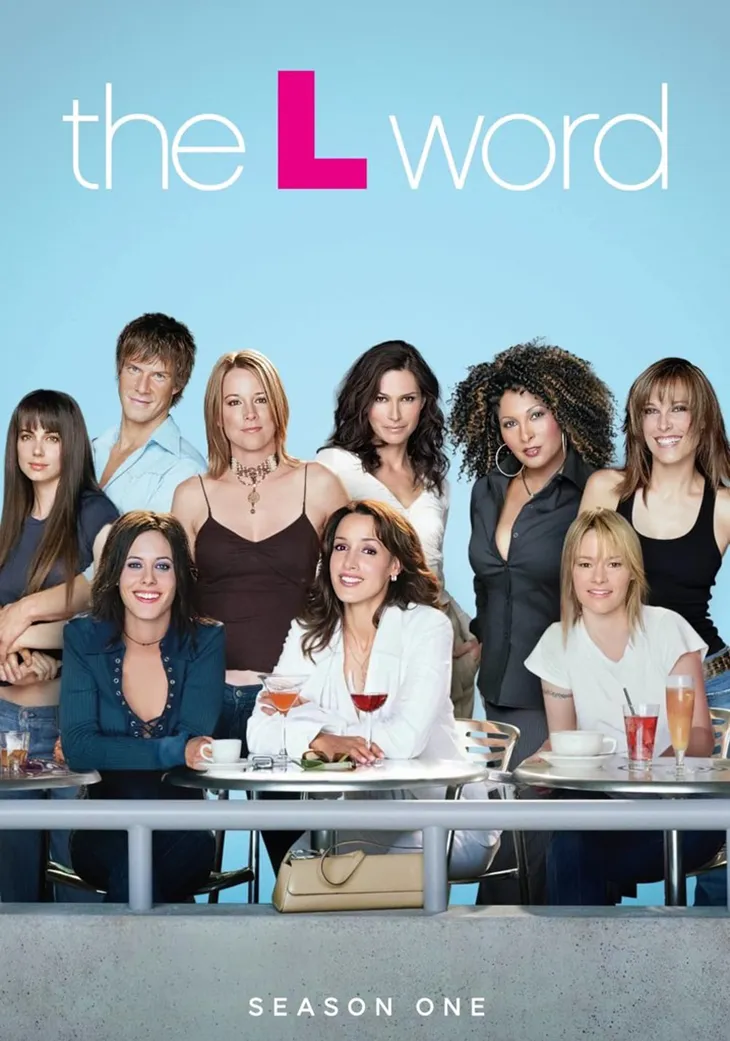
The L Word (2004–2009)
The L Word is a drama series centered on a group of lesbian and bisexual women living in Los Angeles. The show primarily follows Bette Porter, an art gallery director, and her partner Tina Kennard, along with their friends Shane McCutcheon, a hair stylist; Alice Pieszecki, a journalist; and Jenny Schecter, an aspiring writer. Over six seasons, the series explores the women’s professional ambitions, personal struggles, friendships, and romantic relationships.
When it debuted, The L Word filled a significant gap in queer representation. At the time, lesbian characters were often relegated to minor roles or fleeting storylines. This show offered a consistent focus on women-loving-women relationships and placed those stories at the center. It became a key cultural reference point for lesbian and bisexual viewers and sparked discussions around identity, politics, and community. It portrayed themes such as coming out, parenting, marriage, infidelity, and HIV/AIDS from queer perspectives.
Among its main queer characters, Bette and Tina experience a complex on-again, off-again relationship. Shane’s romantic entanglements and gender nonconformity attracted a significant fanbase. Alice navigates bisexual identity. The inclusion of Max Sweeney, a transgender man, was notable but controversial due to the way his transition was portrayed. While the show increased visibility for queer women, it faced criticism for its narrow portrayal of femininity, lack of racial diversity, and the mishandling of trans representation.
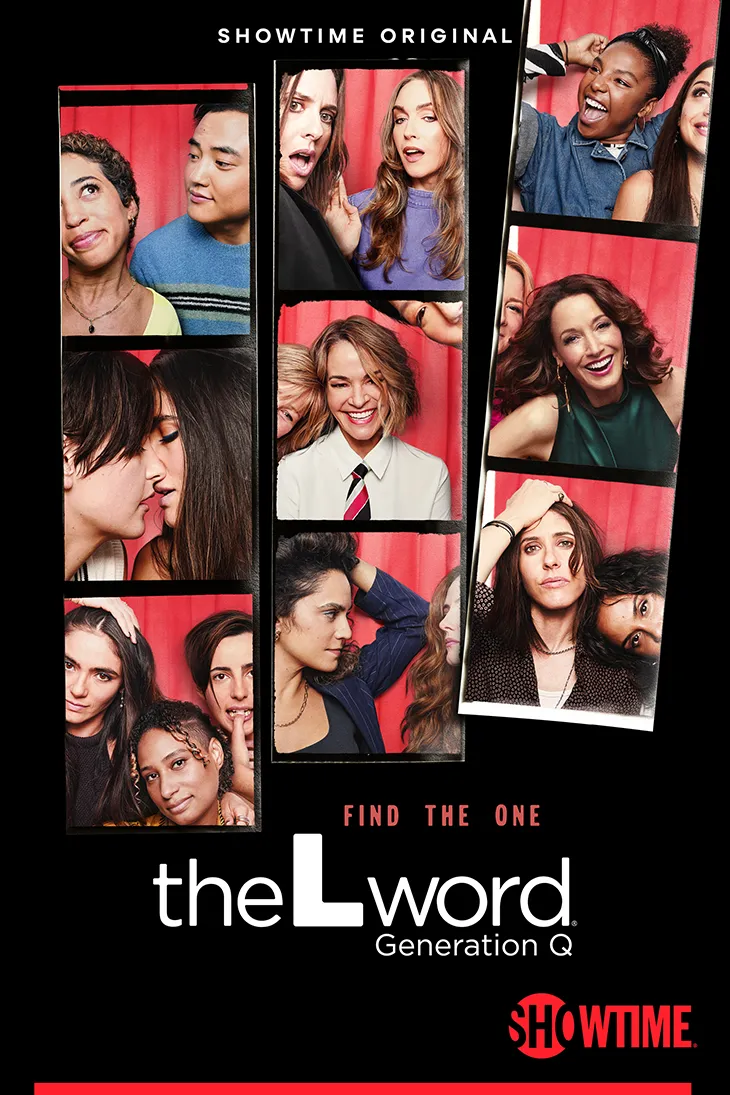
The L Word: Generation Q (2019–2023)
The L Word: Generation Q is a continuation of the original series set roughly a decade later. It reintroduces original characters Bette, Shane, and Alice, while introducing a younger, more diverse cast including Sophie, Dani, Finley, Micah, and Gigi. Set once again in Los Angeles, the new show retains the ensemble drama format while incorporating contemporary issues such as gender identity, racial equity, and political activism.
This iteration was created to address the limitations of the original series, particularly its lack of diversity. The newer show features a racially diverse cast, transgender actors playing trans roles, and a broader range of sexual and gender identities. It reflects current conversations about intersectionality and inclusivity within the LGBTQ+ community and aims to represent a wider spectrum of experiences.
Characters like Micah, a trans man navigating romantic relationships and family expectations, and Sophie, a queer woman torn between two partners, add fresh perspectives. The show also reimagines familiar dynamics with older characters now in mentoring roles. While the series was praised for expanding representation, it occasionally received criticism for melodramatic plotlines and uneven character development. Still, it marked a significant shift toward more inclusive storytelling in queer television.
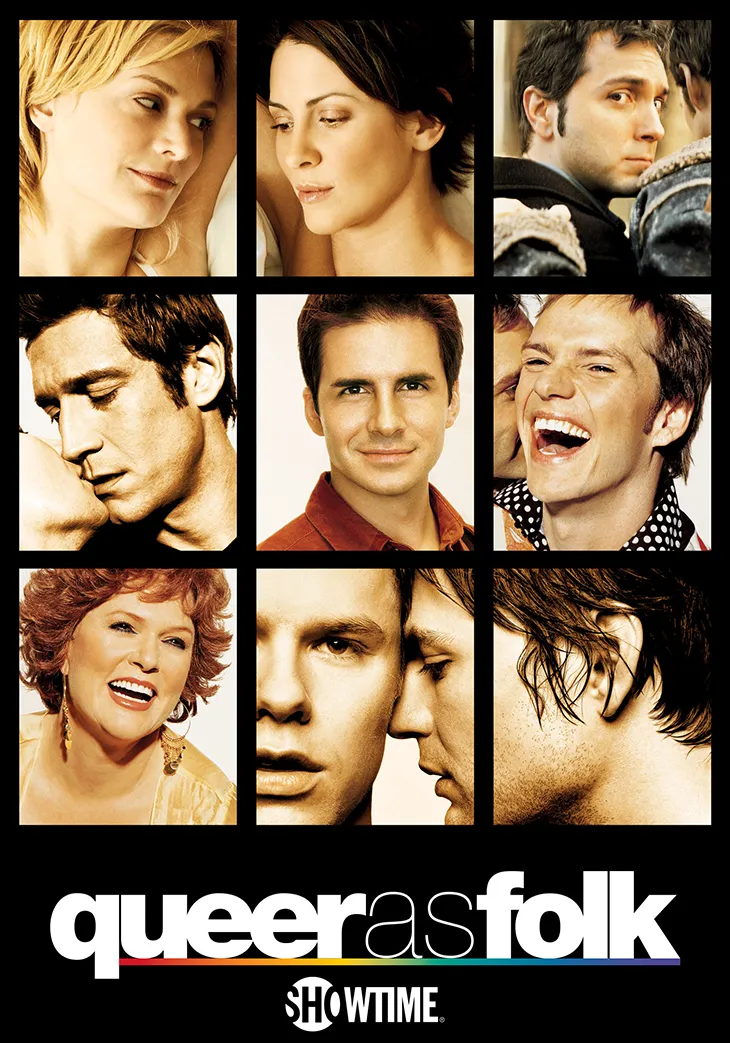
Queer as Folk (1999–2005)
Queer as Folk exists in two major versions: the original UK series and the more widely known U.S. adaptation. Both series follow the lives of gay men and women as they navigate love, friendship, and adversity. The American version focuses on Brian, a charismatic advertising executive; Michael, a comic book enthusiast; Justin, a young artist; and Emmett and Ted, friends who round out their circle. Their stories unfold within the nightlife, professional spaces, and domestic environments of Pittsburgh.
At the time of its release, Queer as Folk offered an unprecedented look into the lives of gay men. It was one of the first series to depict gay relationships, sex, and community with regularity and nuance. The show addressed critical issues including HIV/AIDS, marriage equality, coming out, substance abuse, and discrimination. It also portrayed romantic intimacy and emotional growth, giving viewers a multidimensional view of queer life.
Brian and Justin’s volatile relationship, Michael’s gradual maturity, Emmett’s flamboyance, and Ted’s struggles with self-worth provided a range of emotional arcs. However, the show was criticized for its limited inclusion of lesbians and people of color. The series faced scrutiny for relying on certain stereotypes and for initially avoiding direct engagement with the realities of the AIDS crisis. Despite these shortcomings, Queer as Folk remains a landmark in LGBTQ+ television history.
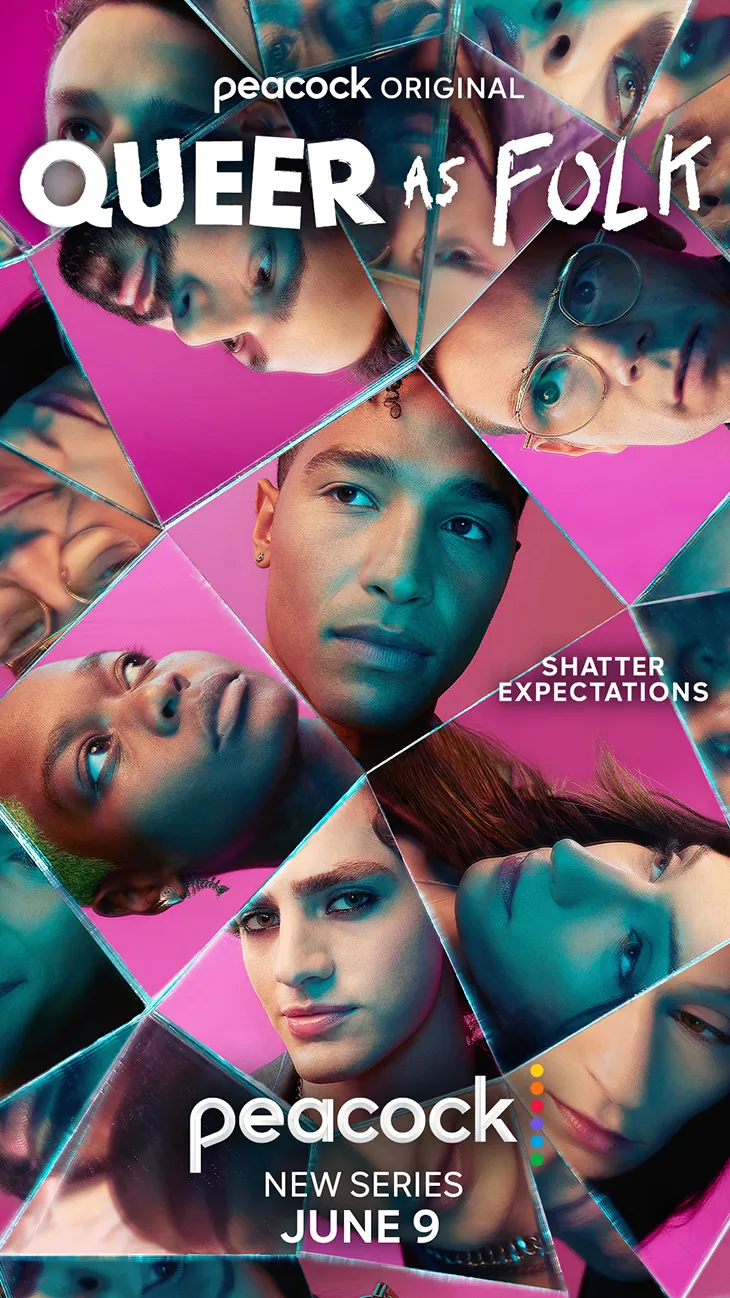
Queer as Folk (2022)
The 2022 reboot of Queer as Folk reimagined the premise in New Orleans with a new, more diverse group of characters. The story follows Brodie, a young man returning home; Ruthie, a trans woman and teacher; Shar, a non-binary character; and others including Julian, Noah, and Mingus. The show opens with a traumatic event – a mass shooting at a queer nightclub – and explores the characters’ lives in its aftermath.
This reboot aimed to reflect the current diversity of queer experiences, featuring trans characters played by trans actors, and including characters with disabilities, different races, and varied gender expressions. It confronted topics like systemic violence, trauma, and queer identity in more direct ways than its predecessors. The show also highlighted the ongoing impact of the Pulse nightclub shooting and other real-world events.
Although praised for its ambition and inclusivity, the series was criticized for uneven pacing and heavy-handed storytelling. Some viewers felt the show lacked cohesion and that certain character arcs were underdeveloped. Nevertheless, it advanced representation by centering characters who had long been excluded from mainstream queer narratives.
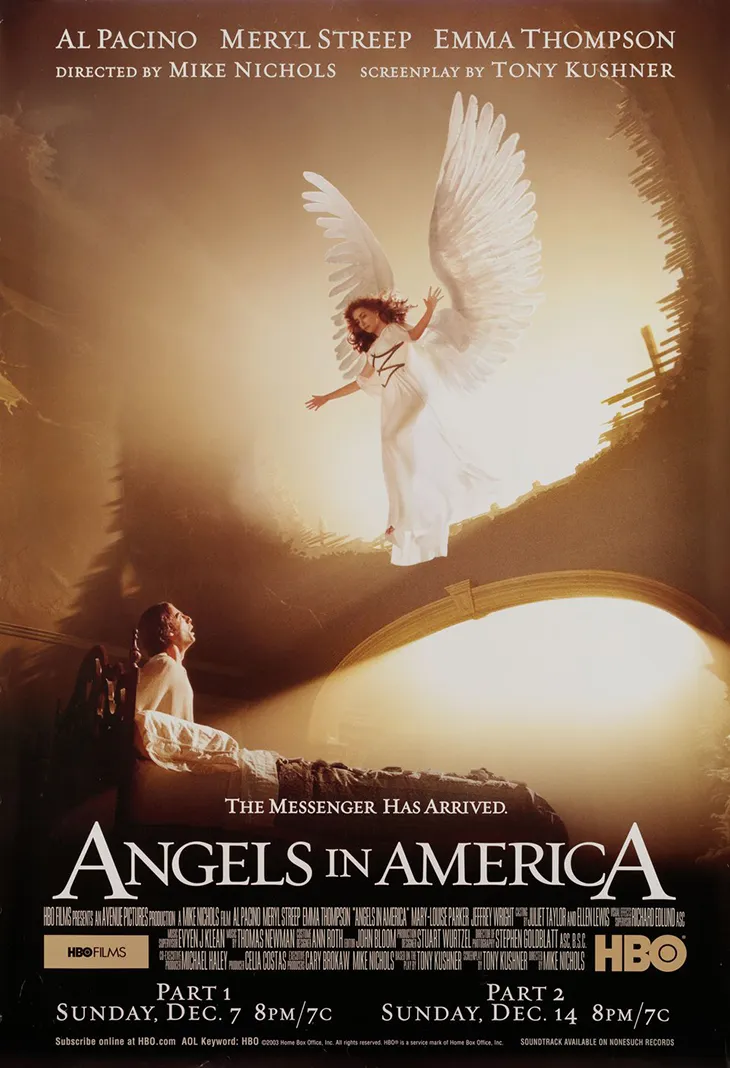
Angels in America (2003)
Angels in America is a two-part HBO miniseries based on Tony Kushner’s Pulitzer-winning play. Set during the Reagan era in the United States, the series weaves together multiple narratives: Prior Walter, a gay man with AIDS; his partner Louis, who abandons him; Belize, a Black gay nurse; and Roy Cohn, a closeted conservative lawyer also diagnosed with AIDS. The narrative blends fantasy and reality, incorporating supernatural elements like angelic visitations and hallucinations.
The miniseries brought the AIDS crisis to the screen in a deeply personal and political way. It examined the consequences of government inaction, homophobia, and moral hypocrisy through layered storytelling. It was one of the first prestige television projects to center on gay characters, and it treated their lives with depth and complexity.
While the production received acclaim for its performances and writing, its focus was limited largely to white, male characters. The fantasy elements could be difficult to follow for some viewers, and the series’ tone at times veered into didacticism. Nevertheless, Angels in America remains a powerful portrayal of a community under siege and a landmark in queer media.
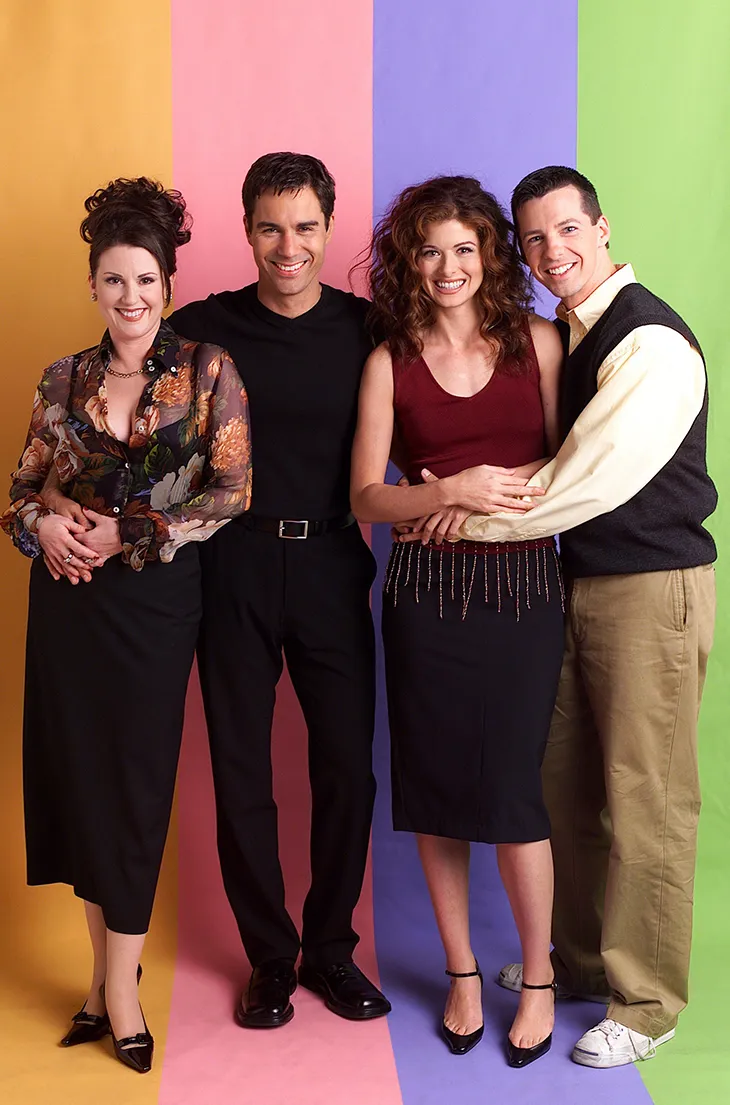
Will & Grace (1998–2006; 2017–2020)
Will & Grace is a sitcom about Will Truman, a gay lawyer, and his best friend Grace Adler, a straight interior designer. Alongside them are Karen Walker, Grace’s assistant, and Jack McFarland, Will’s exuberant gay friend. The series is set in New York and revolves around the friendships and romantic misadventures of this close-knit group.
It broke ground by featuring a gay male lead on a primetime network sitcom. The show helped normalize gay characters for mainstream audiences by presenting Will and Jack as integral parts of a relatable and humorous social circle. It reached millions of viewers and contributed to changing public perceptions of LGBTQ+ people.
Will, reserved and practical, and Jack, flamboyant and expressive, offered contrasting portrayals of gay identity. Their presence on television helped validate a wide spectrum of gay male experiences. While praised for its humor and inclusivity, the show also faced critique for relying on stereotypes and for excluding broader queer identities, such as lesbians or trans people, from its main narrative.
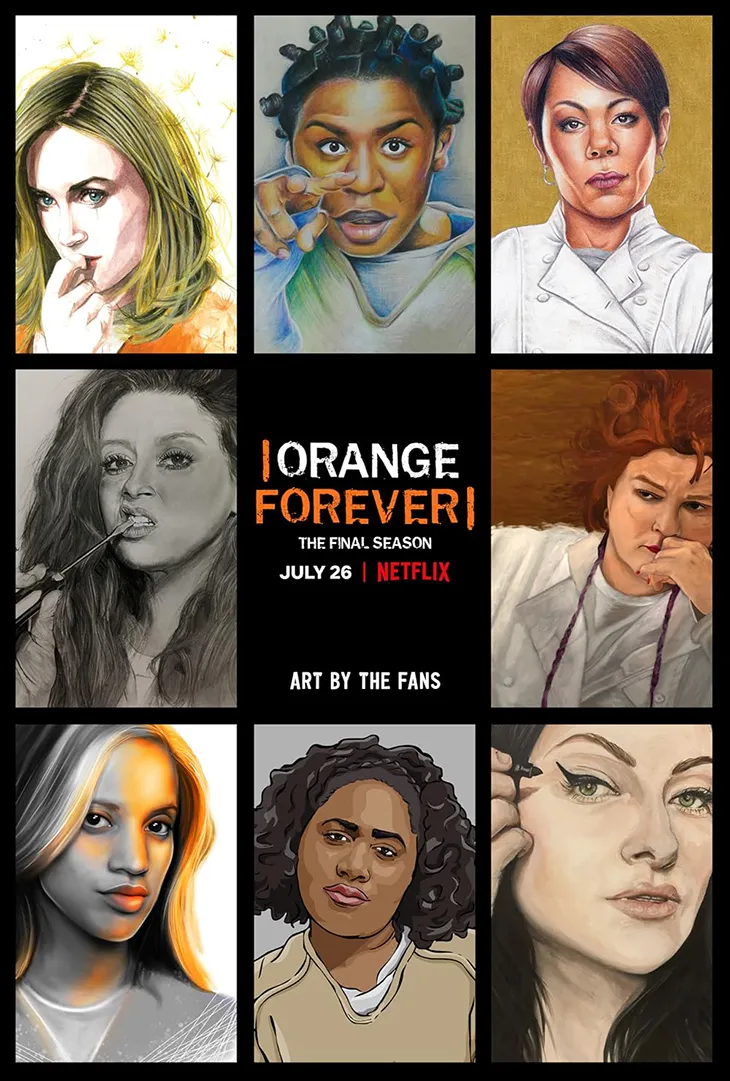
Orange Is the New Black (2013–2019)
Orange Is the New Black is a dramedy set in a women’s prison, centered initially on Piper Chapman, a white woman convicted for a drug offense. As the series progresses, the ensemble cast takes center stage, featuring multiple queer women and trans characters. Alex, Piper’s ex-girlfriend, is a major love interest. Other key characters include Sophia, a trans woman; Poussey and Taystee, best friends with romantic undertones; and Nicky, a lesbian dealing with addiction.
The show significantly expanded queer visibility, especially for women of color and transgender individuals. Its diverse cast and range of storylines depicted love, friendship, violence, and survival within the prison system. It demonstrated that a series about marginalized people could achieve both critical and commercial success.
Despite its achievements, the show was not without flaws. It faced criticism for tragic portrayals of queer characters, especially the death of Poussey, and for sometimes centering the narrative too much on Piper. Still, it remains a benchmark for inclusive ensemble storytelling in television.
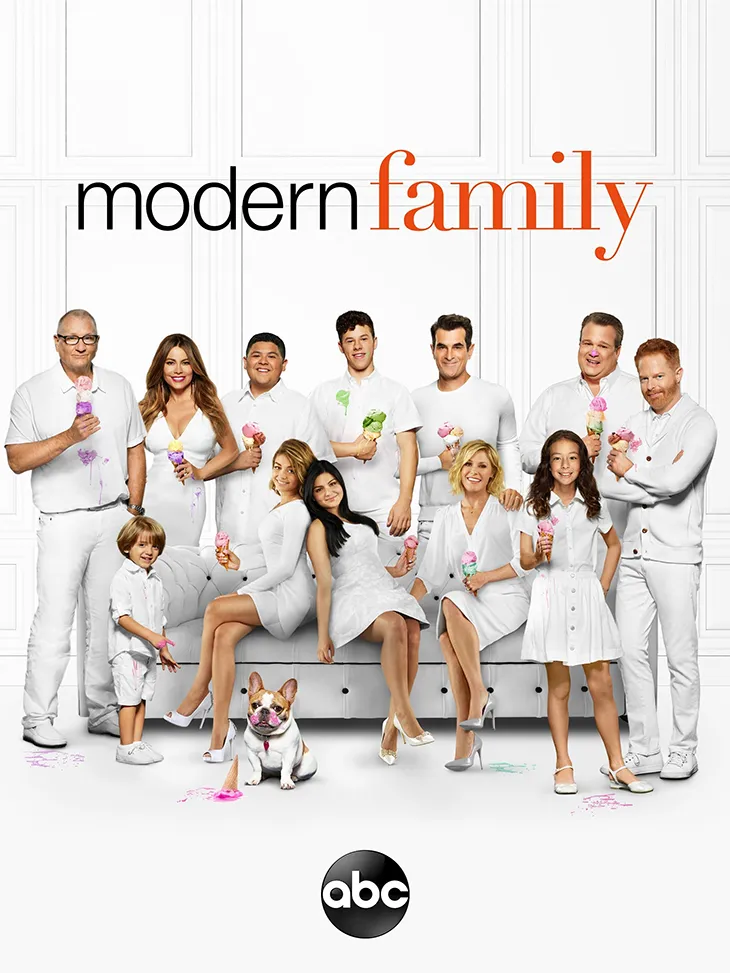
Modern Family (2009–2020)
Modern Family is a mockumentary-style sitcom that revolves around the extended Pritchett-Dunphy-Tucker family in Los Angeles. Among the ensemble, one of the key households features Mitchell Pritchett and Cameron Tucker, a married gay couple raising their adopted daughter Lily. Mitch, a lawyer, is more reserved and anxious, while Cam, a stay-at-home dad with a background in musical theater and football, is expressive and extroverted. The couple’s differences are a recurring source of humor and tension, but also reflect real-life dynamics in long-term relationships. As they navigate parenting, marriage, and their careers, the show frequently places them in domestic situations that mirror those of the straight couples in the series, reinforcing the idea that same-sex couples belong within the everyday definition of family life.
Despite its popularity and progressiveness, the show received criticism for relying on stereotypes in its depiction of gay men. Cam’s flamboyance and theatrical personality, while entertaining, often leaned into clichés, and Mitch was occasionally framed as a counterbalance rather than as a fully formed character in his own right. Critics also pointed out that Modern Family offered little LGBTQ+ representation outside of Mitch and Cam – there were few queer women or trans characters, and recurring LGBTQ+ characters were limited. Still, for many viewers, Mitch and Cam were the first same-sex couple they regularly saw on television, and their presence in a widely beloved, long-running sitcom helped shift perceptions of what family could look like in 21st-century America. The show’s humor, relatability, and longevity helped make it an important part of LGBTQ+ television history.

Six Feet Under (2001–2005)
Six Feet Under is an HBO drama series that aired from 2001 to 2005, centering on the Fisher family, who run a funeral home in Los Angeles. One of the main protagonists, David Fisher, is a gay man grappling with his sexual identity, religious beliefs, and professional responsibilities. Throughout the series, David’s evolving relationship with Keith Charles, a Black police officer, forms one of the show’s most significant emotional arcs. Their relationship is presented with the same complexity, intimacy, and emotional stakes as the heterosexual relationships in the show, which was still a rarity on television at the time.
David begins the series deeply closeted, hiding his sexuality from his family and struggling with internalized shame. His boyfriend Keith, in contrast, is more comfortable with his identity and becomes a crucial figure in David’s journey toward self-acceptance. Their relationship is tested by jealousy, infidelity, emotional withdrawal, and the challenges of reconciling their very different personalities. As the series progresses, David eventually comes out to his family and colleagues, and the two men embark on a journey of emotional growth that includes therapy, domestic conflict, and, eventually, co-parenting and commitment. Their love story develops with authenticity and continuity across all five seasons, culminating in a portrayal of long-term partnership that is both emotionally resonant and narratively grounded.
The importance of Six Feet Under lies in how it seamlessly integrates a gay couple into the central emotional fabric of a prestige drama. David and Keith are not supporting characters – they are co-leads with sustained development, treated seriously and empathetically. Their struggles are framed not around their sexual orientation, but around universal issues: honesty, vulnerability, and trust. Six Feet Under remains one of the earliest prestige dramas to treat a gay relationship with such emotional weight, helping set the tone for more realistic, multidimensional LGBTQ+ characters in television drama.
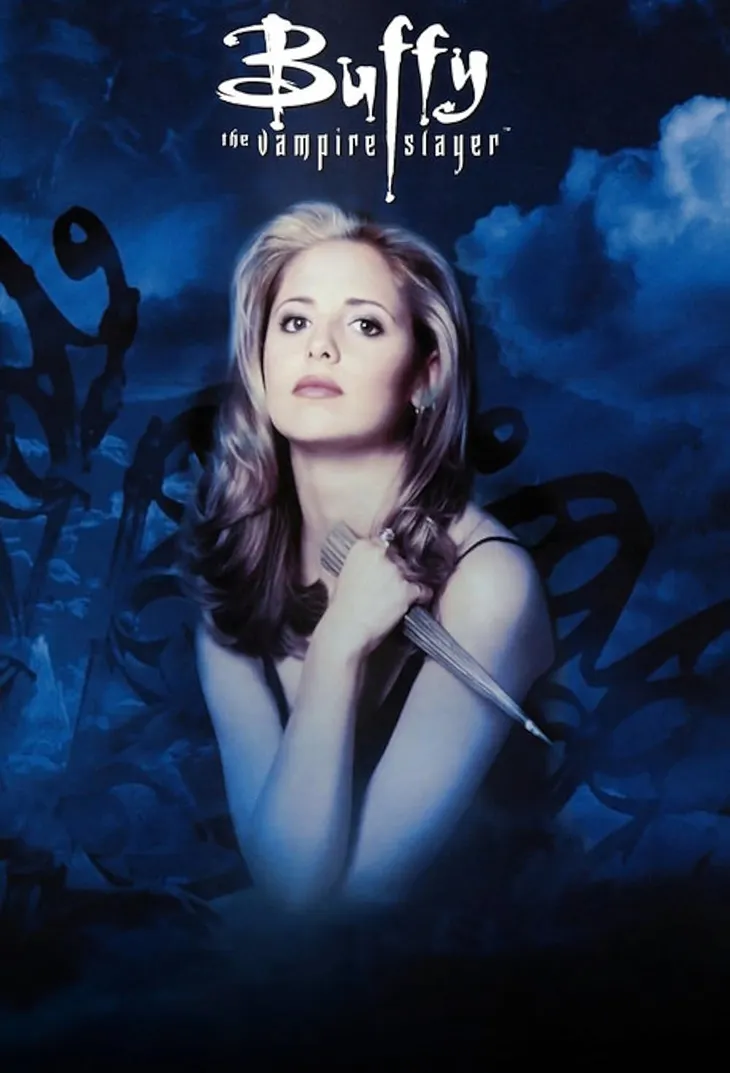
Buffy the Vampire Slayer (1997–2003)
Buffy the Vampire Slayer is a supernatural drama that originally aired from 1997 to 2003. Set in the fictional town of Sunnydale, California, it follows Buffy Summers, a high school student chosen to battle vampires, demons, and other forces of evil. Buffy is joined by a close-knit group of friends known as the “Scooby Gang,” including Willow Rosenberg, who becomes one of television’s most notable queer characters.
Willow’s journey from shy, bookish sidekick to powerful witch includes a pivotal shift in her sexual identity. In Season 4, she meets Tara Maclay, a fellow witch, and their friendship develops into a romantic relationship. This marked one of the first long-term lesbian relationships on network television and was portrayed with care and emotional depth. Rather than treating Willow’s sexuality as a shocking twist or one-off episode, the show integrated her relationship into the broader narrative, giving it emotional weight and continuity. Willow and Tara share quiet moments of affection, intense magical collaborations, and deeply personal conversations. Their bond becomes one of the emotional anchors of the show, especially as they navigate trust issues, magical addiction, and interpersonal struggles.
The show deserves recognition for presenting Willow and Tara’s relationship as genuine and multi-dimensional at a time when queer women on television were scarce. However, it also attracted serious criticism, particularly for Tara’s death in Season 6. After reconciling with Willow, Tara is killed by a stray bullet in a moment that many viewers found gratuitous and emotionally manipulative. This event triggered a widespread outcry and has since been cited as a key example of the “bury your gays” trope – the tendency for queer characters, especially women, to meet premature or tragic ends. Tara’s death not only devastated fans, but also reinforced a harmful pattern in media where queer relationships are punished or left unresolved. Despite this, Willow remained central to the series, and later entered a new relationship with Kennedy, another young woman. That development, while controversial among fans who preferred Tara, helped underscore the fact that Willow’s queerness was not situational but intrinsic to her character.
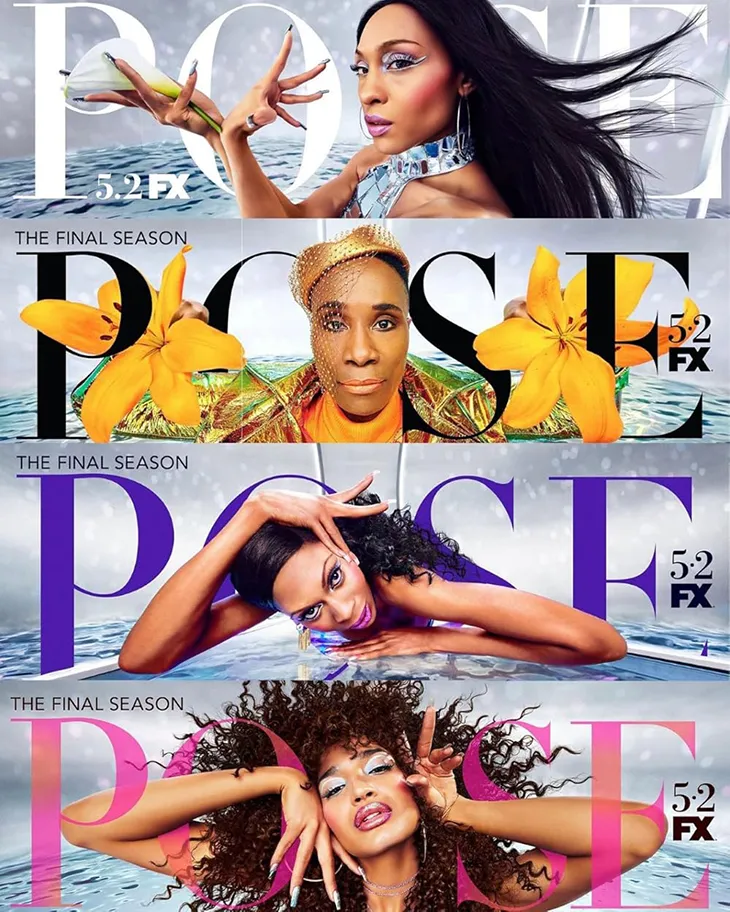
Pose (2018–2021)
Pose is a drama series set in New York’s ballroom scene during the late 1980s and early 1990s. It follows Blanca Evangelista, a Black trans woman who starts her own house to support LGBTQ+ youth rejected by their families. The show also centers on Angel, a trans sex worker pursuing a modeling career, and Pray Tell, a gay Black emcee living with HIV. Through these characters, the series explores themes of chosen family, survival, and community in the face of systemic racism, transphobia, and the AIDS crisis.
What sets Pose apart is its historic cast – featuring the largest number of trans actors in regular roles at the time – and its focus on Black and Latinx LGBTQ+ experiences. It brought visibility to the ballroom culture that shaped queer life in New York, while also confronting healthcare inequality, housing insecurity, and grief. The storytelling gave voice to characters often excluded from mainstream television, without reducing their lives to struggle alone.
While the show was celebrated for authenticity and emotional depth, later seasons were sometimes critiqued for uneven writing. Still, Pose remains a landmark series that redefined trans representation on screen and introduced a wider audience to a vital part of queer history.
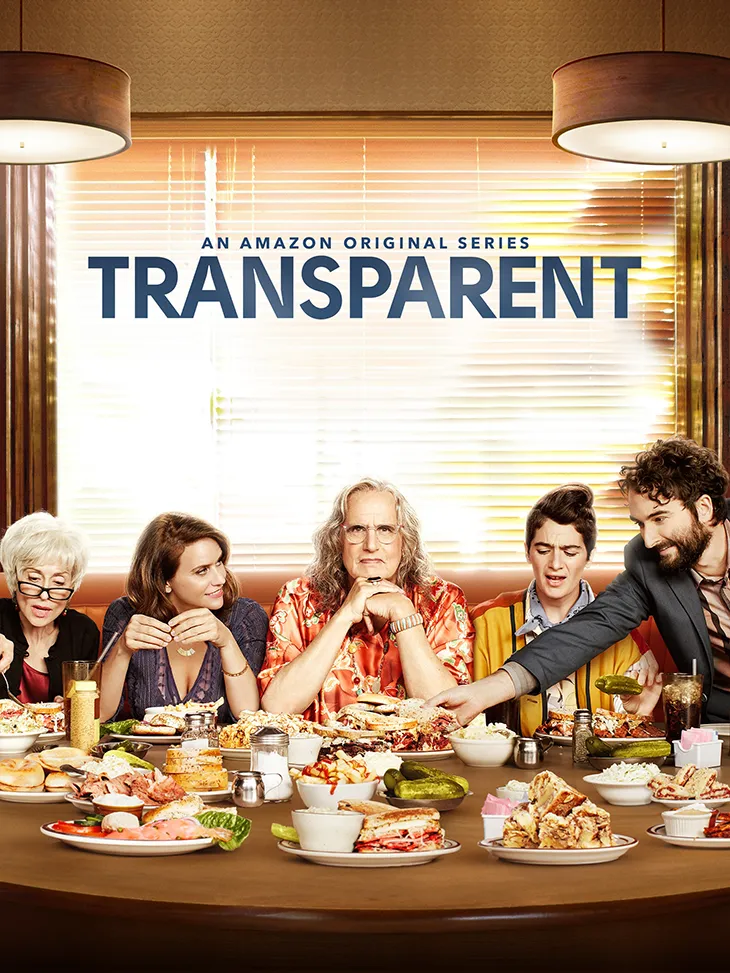
Transparent (2014–2019)
Transparent is a dramedy series that follows the Pfefferman family in Los Angeles after Maura, formerly Mort, comes out as a transgender woman later in life. The show focuses on Maura’s transition but also on how it affects her adult children – Sarah, Josh, and Ali – as they navigate their own relationships and identities. Maura’s journey toward self-recognition and social affirmation unfolds alongside the family’s long-buried tensions, creating a layered portrait of gender, family, and generational change.
The show was one of the first major streaming series to center a transgender character and used that platform to explore trans issues with more complexity than was common at the time. It featured trans writers and consultants behind the scenes and introduced topics such as medical transition, dating while trans, and non-binary identity to a broad audience. In addition to Maura, Sarah is a lesbian, Josh explores queer desire, and Ali ultimately embraces a queer and gender-fluid identity, making Transparent a rare example of a show with multiple queer leads from one family.
Despite its achievements, Transparent faced criticism – particularly for casting a cisgender man, Jeffrey Tambor, as Maura. That controversy intensified after Tambor was accused of misconduct and removed from the series. While the show helped expand queer and trans visibility, especially on streaming platforms, its legacy remains complex, marked by both its cultural impact and its casting choices.
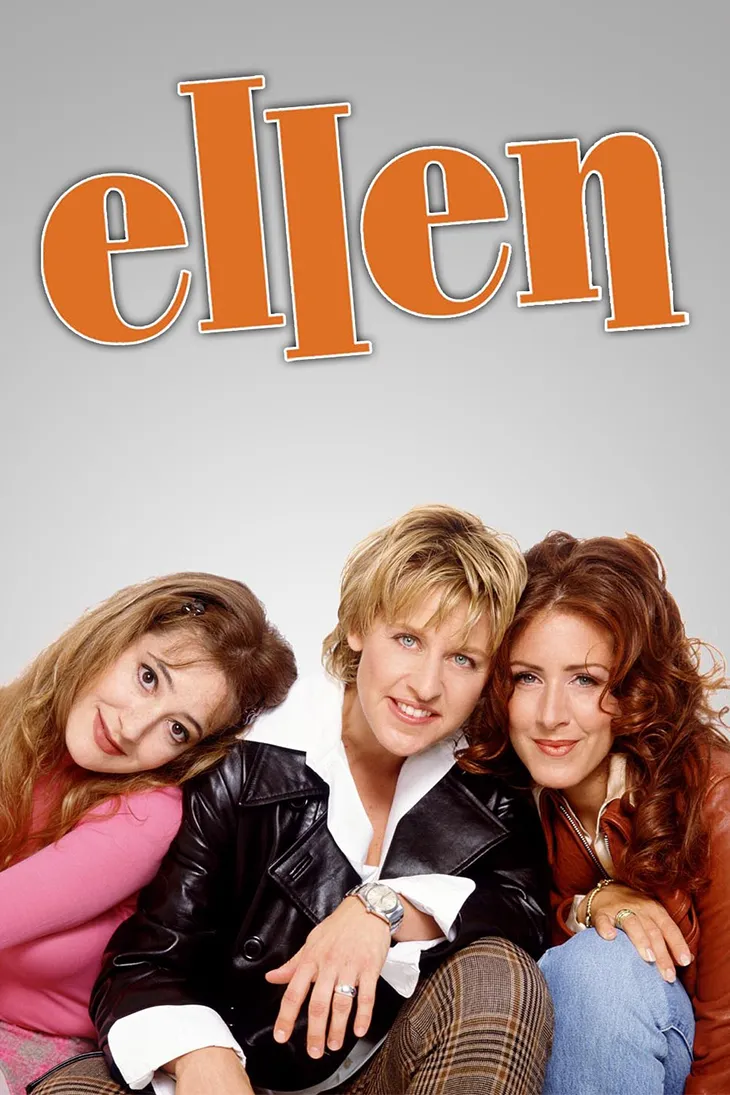
Ellen (1994–1998)
Ellen was a sitcom starring Ellen DeGeneres as Ellen Morgan, a bookstore owner navigating friendships, work, and dating. In 1997, the show made television history when both the character and the actress came out as gay in “The Puppy Episode,” becoming the first time a lead in a primetime sitcom openly identified as queer. This moment shifted the show’s direction and launched a broader public conversation about LGBTQ+ visibility in mainstream media.
After coming out, Ellen’s character began dating women, and the show explored her experiences with humor and emotional sincerity. It depicted her coming-out process, the reactions of her friends and family, and the awkwardness of navigating life as an openly gay woman in a world that was not always welcoming. The show also introduced lesbian dating and community topics into network television for the first time in a consistent way.
While the episode was groundbreaking, it came with backlash. Ratings dropped, and the show was canceled the following season. Ellen DeGeneres herself faced industry pushback that affected her career for years. Still, the cultural impact of Ellen remains undeniable. It opened the door for future queer representation in television and proved that LGBTQ+ characters could take center stage.
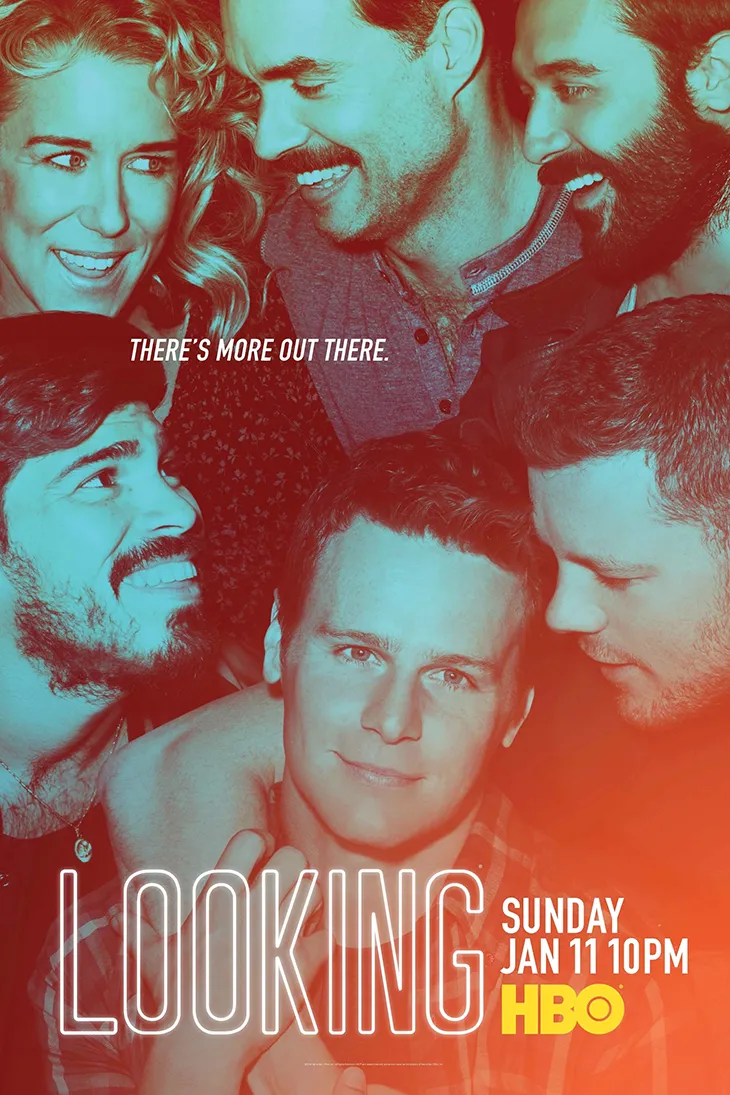
Looking (2014–2016)
Looking is an HBO series that aired from 2014 to 2016, focusing on a group of gay men living in San Francisco. The story follows Patrick, a video game designer; Agustín, an artist navigating a long-term relationship; and Dom, a middle-aged waiter considering opening his own restaurant. The show explores dating, friendship, career, and self-understanding with a quiet, observational tone, often capturing the intimacy and awkwardness of everyday life.
What made Looking stand out was its realism. It avoided exaggerated drama or stereotypical portrayals, instead offering a grounded look at modern gay relationships. The series showed characters navigating app-based dating, open relationships, and generational differences within the queer community. It also included supporting characters like Richie, a working-class barber and Patrick’s love interest, whose presence brought racial and cultural nuance to the show’s primarily white cast.
Despite critical praise for its naturalistic storytelling, Looking struggled to connect with a wide audience and was canceled after two seasons. A concluding TV movie wrapped up the characters’ arcs. While it wasn’t a commercial hit, Looking marked a shift toward quieter, character-driven queer storytelling and remains important for its attempt to portray gay life beyond clichés or trauma narratives.
These shows laid the groundwork for the queer stories being told today – stories that are more expansive, more intersectional, and more willing to center the full range of LGBTQ+ lives. Whether through the cultural shockwaves of Ellen, the emotional precision of Looking, or the historic casting of Pose, each series documented a moment in time and helped move queer visibility forward on screen.
As queer representation continues to evolve, we’re also spotlighting what’s next. For more current recommendations, explore our features on 10 LGBTQ+ TV Shows to Watch This June – curated to reflect where queer storytelling is today, and where it’s heading next.
